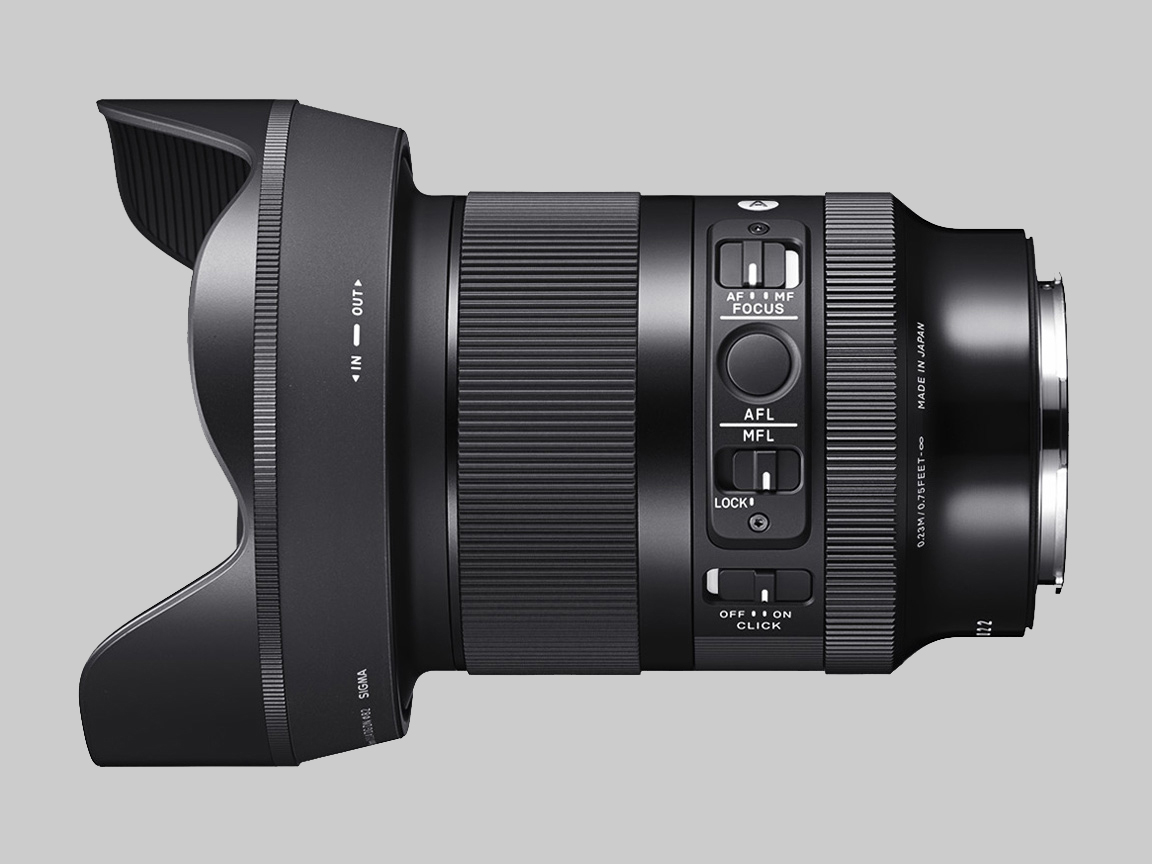Sigma’s Art series primes are favored by photographers who love the mix of sharpness and punchy, saturated colors. But, now, one of the series’ most iconic DSLR lenses is finally making its way into the mirrorless world. The Sigma 20mm f1.4 DG DN Art brings the company’s DSLR prime into mirrorless, launching with the option for E-Mount or L-Mount. While these mounts have other wide-angle options, like the DSLR version, Sigma is once again the only 20mm f1.4 full-frame lens available.
We hate banner ads too. Download our app for iOS, iPad, and Android and get no banner ads for $24.99/year.
Sigma 20mm f1.4 DG DN Art Key Features
- Sigma says the lens is sharp shooting wide-open and that, for astrophotography, stars aren’t distorted by sagittal coma flare.
- It’s designed with 17 elements in 15 groups, including aspherical elements, and has an 11-blade diaphragm.
- The lens can accommodate 82mm screw-on front filters and also has a rear filter holder.
- Sigma added a new manual focus lock to keep the focus locked in place. It also has an aperture de-click switch and a way to keep lens heaters in place.
- Its dust and splash resistant to light rain and is made from aluminum and Thermally Stable Composite.
- It uses a stepping motor for autofocus.
- The lens weighs 22.2 ounces for Sony E-Mount and 22.4 for L-Mount, measuring about 4.5 inches long.
A DSLR Favorite Arrives for Mirrorless
We don’t automatically rank a lens highly because it has the Art name tacked onto the end — we’ve tried a few that haven’t been favorites. But the DSLR version of this lens is one we gave five stars and an Editor’s Choice Award to back in 2015. Editor-in-Chief Chris Gampat praised the lens’ sharpness, bokeh, and saturated colors but pointed out the lack of weather-sealing and some very occasional color fringing.
Based on what I’ve seen from Sigma’s E-Mount lenses, I would expect the mirrorless version of this lens to offer that same sharpness and really punchy color. Sigma’s Art lenses have a certain look and tend to be pretty consistent with contrasty colors and sharp optics.
That f1.4 isn’t available on another full frame 20mm. That, mixed with 11 aperture blades and a 9.1-inch minimum focusing distance, should help create nice bokeh for an ultra-wide.
However, we also praised the DSLR version for its super-fast autofocus. For mirrorless, companies don’t always play nice and share autofocus algorithm data with third parties. Sometimes, the autofocus on third-party lenses can lag behind. This, of course, depends largely on the lens. I’ve used Sigma lenses with excellent autofocus, but I’ve also owned a Sigma lens that struggled to lock focus when backlit. While I would be shocked if this lens didn’t have the characteristic Sigma colors and sharpness, I would have to test this lens to see how well the autofocus holds up. Even if it lags a bit, the subjects typically shot with wide angles — like landscapes — tend to be okay with just average autofocus performance.
An Astrophotography Performer?
If the sharpness and minimal sagittal coma flare that Sigma is promising is there, this should be a pretty solid lens for astrophotography. Ultra-wides tend to be a genre favorite, but that f1.4 will allow more light in. That is, as long as photographers can get the stars perfectly in focus. The manual focus ring lock should help. Since autofocus doesn’t work on the night sky (unless you’re Olympus), astro shooters won’t mind if the mirrorless lens doesn’t focus as fast.
Of course, if you’re the type of photographer who embraces flare and character more, this might not be for you.
Sigma’s Art lenses often come in at a little less than competing high-level optics, but that’s not the case here. The Sigma 20mm f1.4 DG DN Art retails for $899. That’s not a shocking number considering the wide angle and wide aperture. But, Sony’s own 20mm f1.8 G lens sells for $898. There’s an aperture difference for E-Mount shooters but not much of a price difference.
The mirrorless lens’ arrival is arguably the most exciting for L-Mount shooters. Current L-Mount 20mm options include an f4 from Laowa and an f2 as part of Sigma’s Contemporary line. The Sigma Art brings an ultra-wide with an ultra-wide aperture, where Sony shooters at least had the option of an f1.8.


